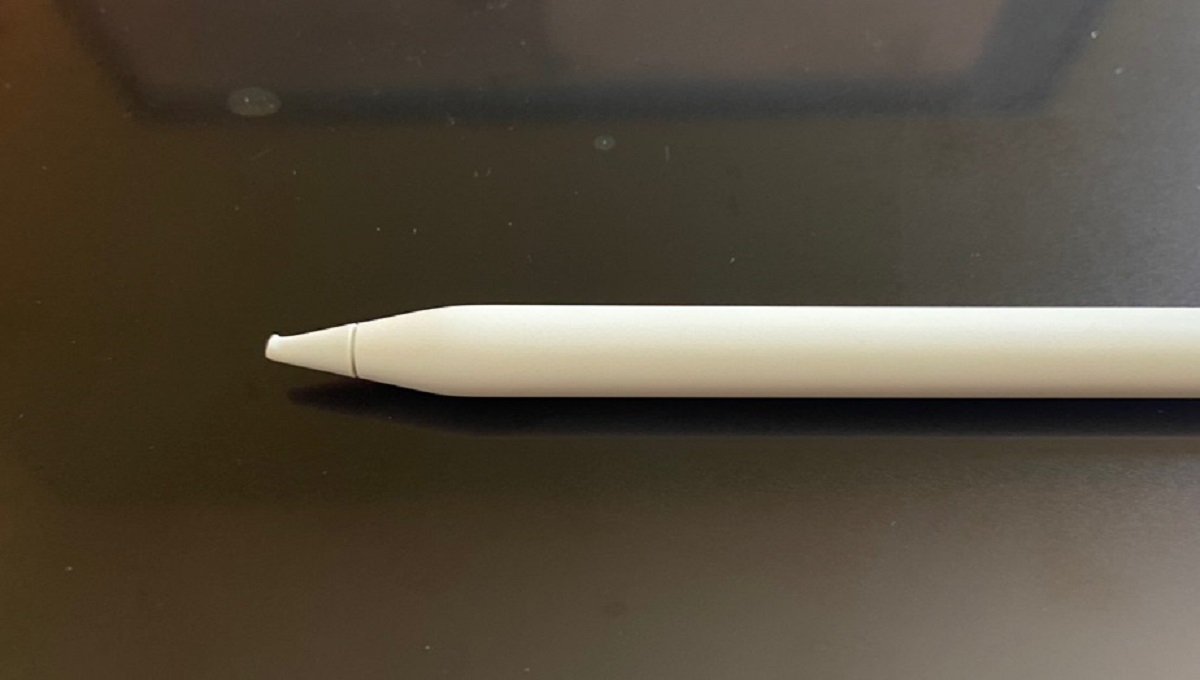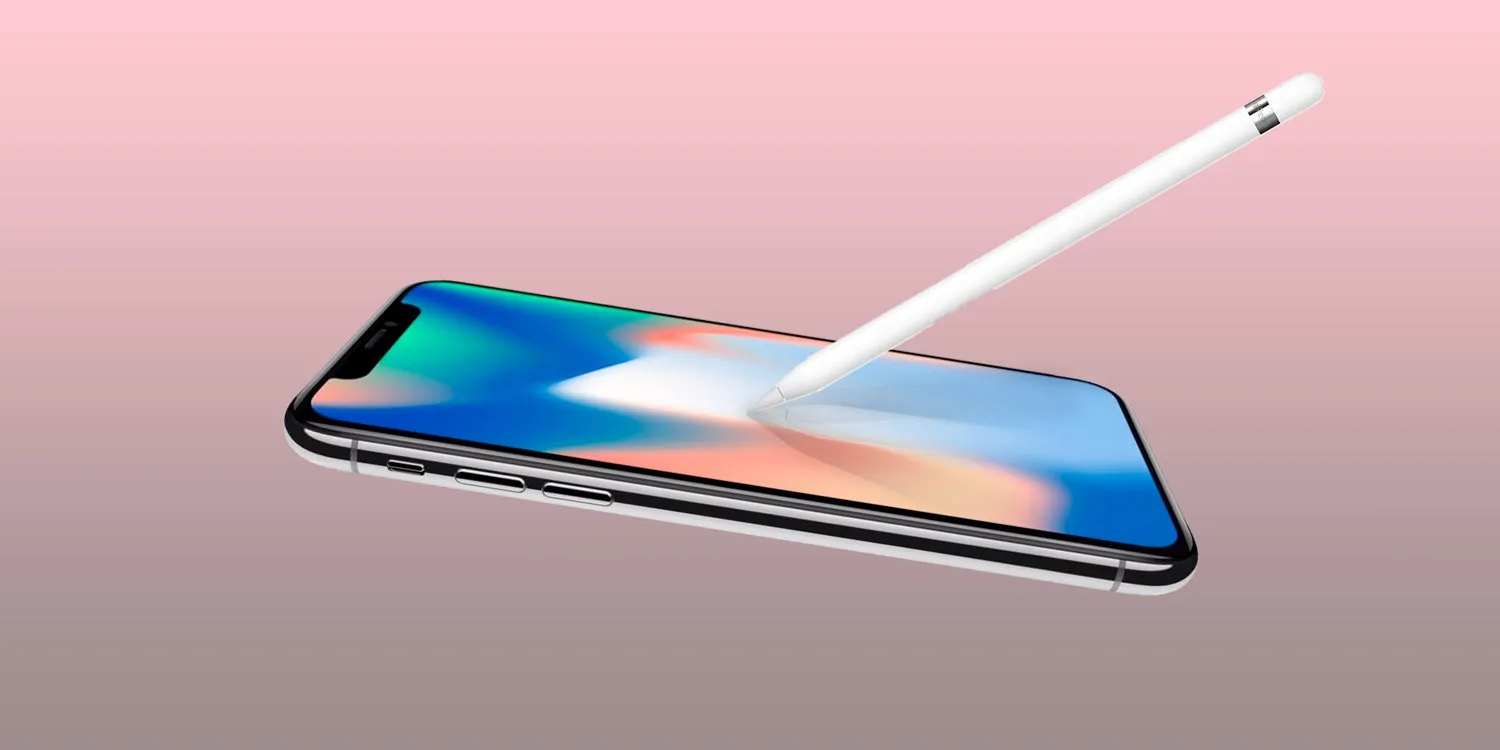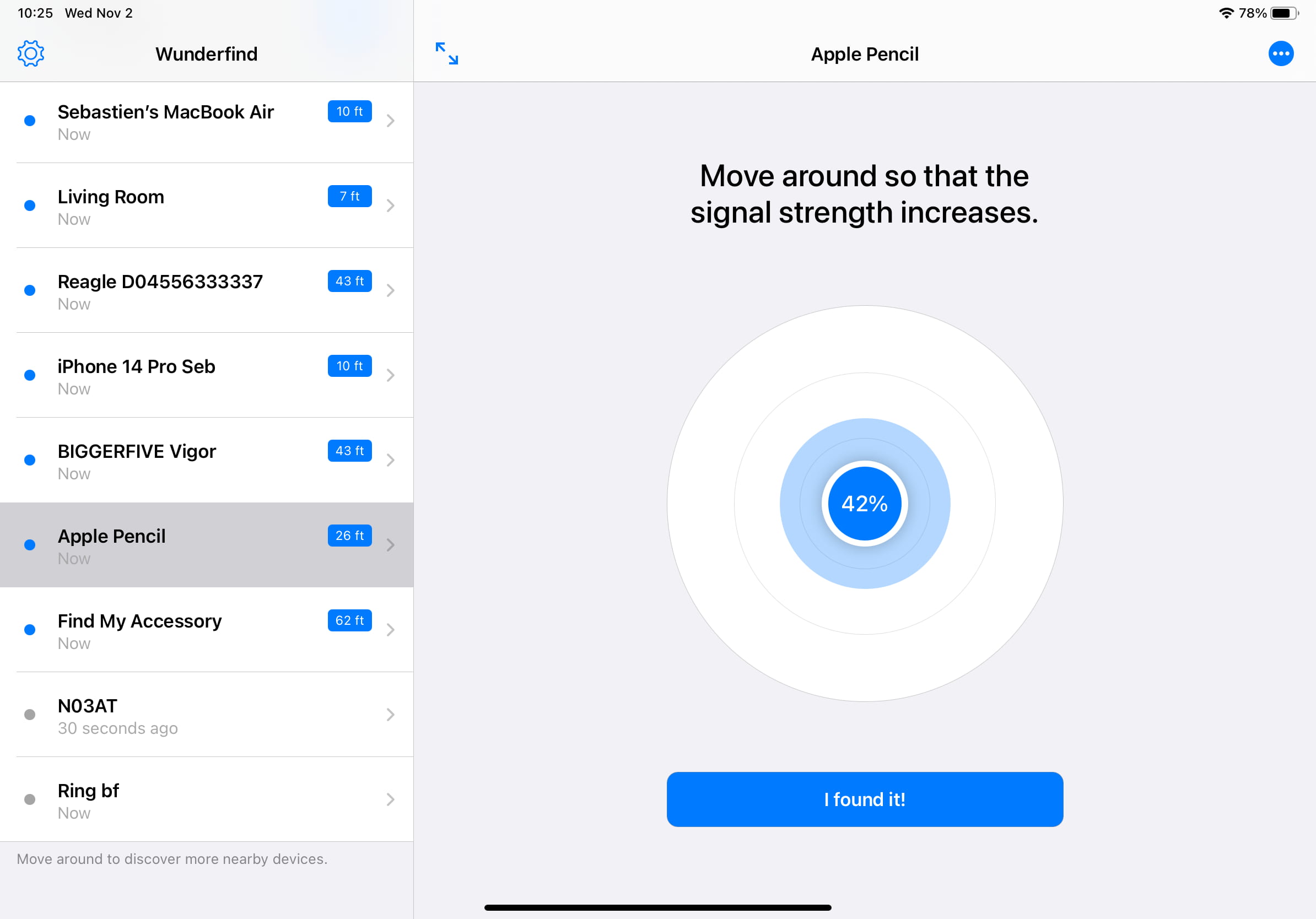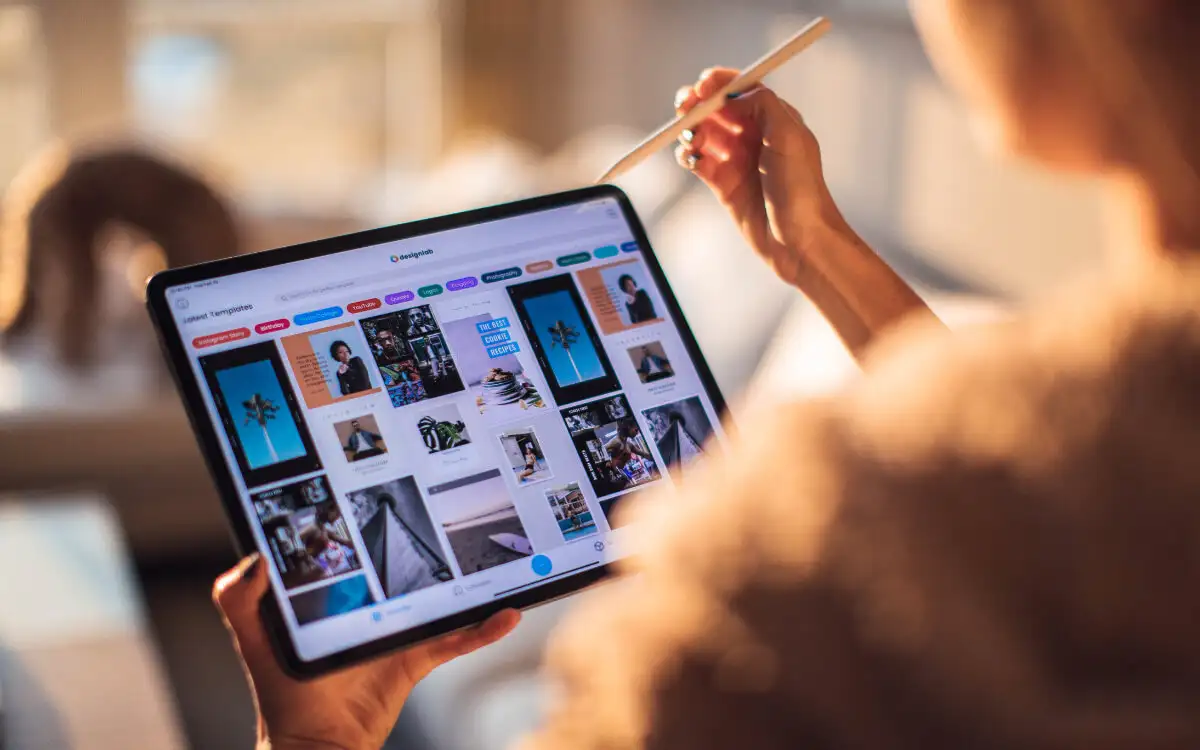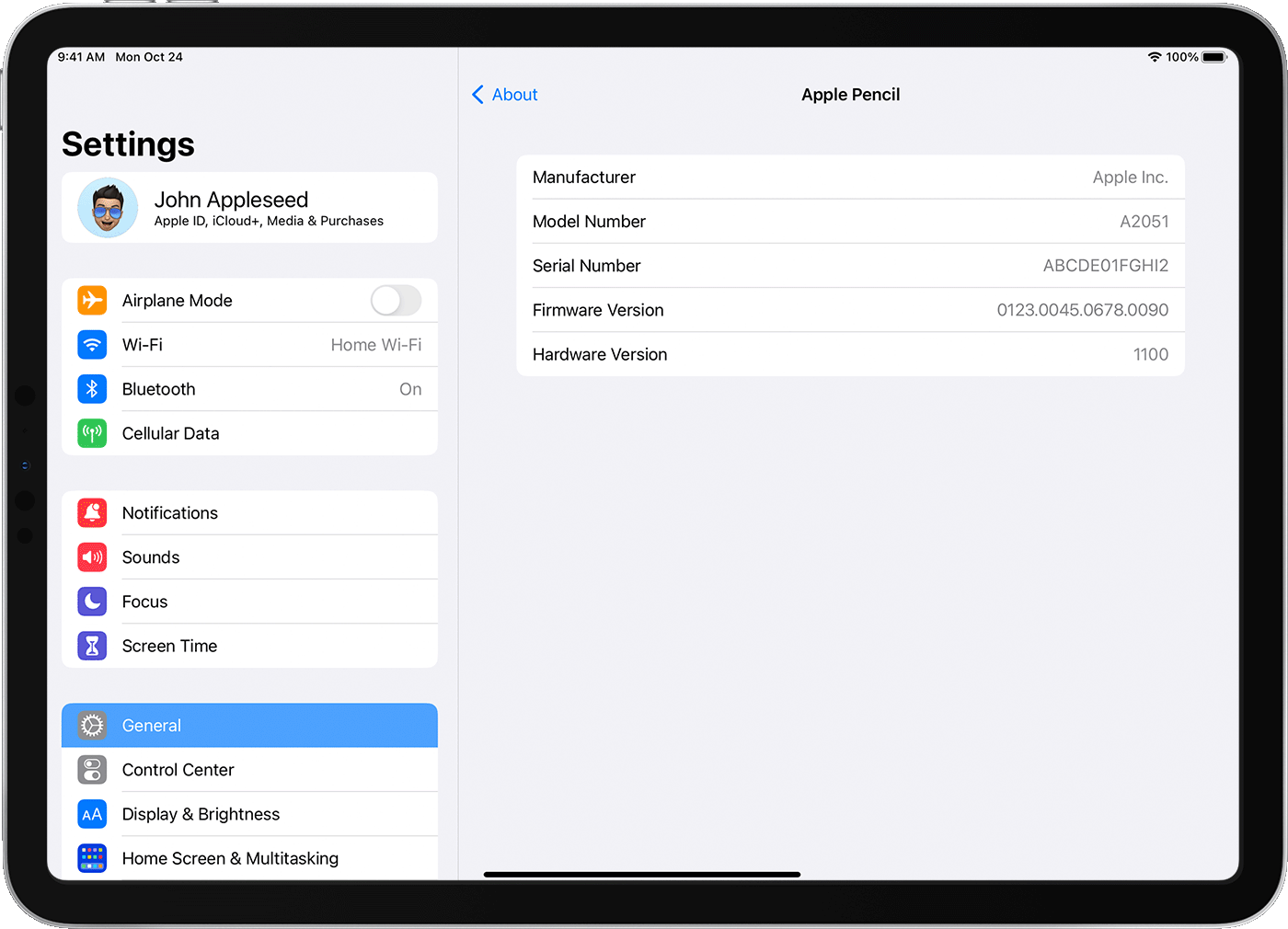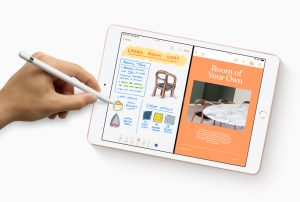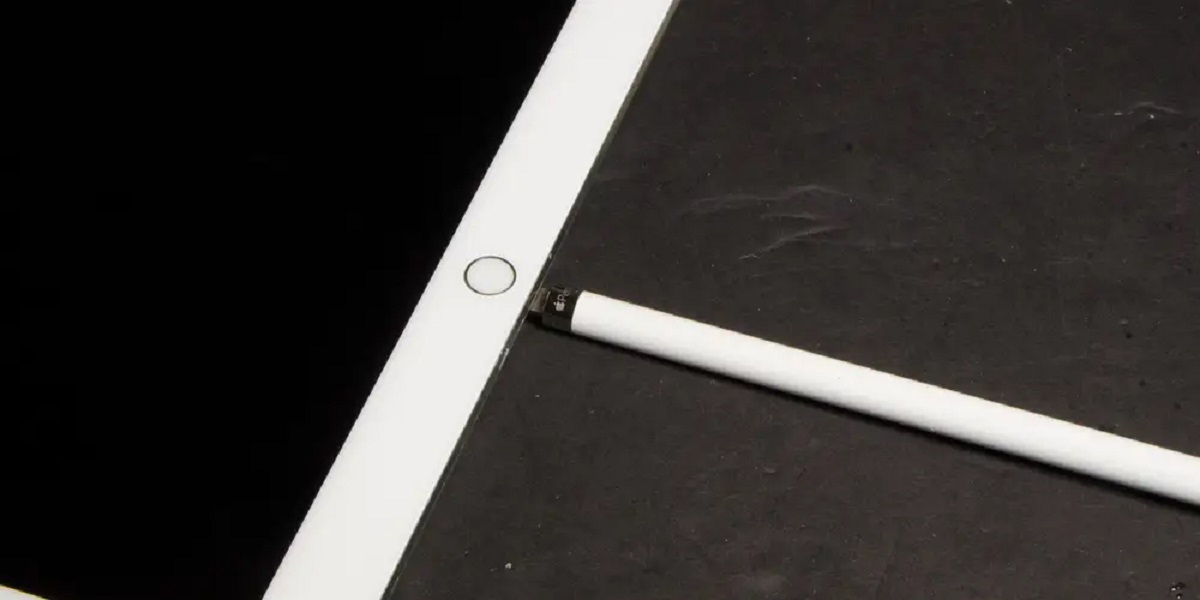Introduction
Have you ever encountered the frustrating situation where your Apple Pencil suddenly stops working? If so, you’re not alone. The Apple Pencil is an innovative tool that enhances the iPad experience, allowing users to draw, write, and navigate with precision. However, like any electronic device, it can encounter issues that may hinder its functionality.
In this article, we will explore the possible reasons behind your Apple Pencil not working and provide troubleshooting tips to help you resolve the issue. By following these steps, you can get your Apple Pencil back up and running in no time.
Before we dive into the troubleshooting process, it’s important to note that Apple Pencil models vary depending on the iPad model you own. The first-generation Apple Pencil is compatible with certain iPad models, while the second-generation Apple Pencil is designed specifically for iPad Pro models released after 2018. Make sure you have the correct Apple Pencil model for your device.
Now, let’s delve into the possible reasons why your Apple Pencil may have stopped working and the steps you can take to fix it.
Possible Reasons for Apple Pencil Not Working
There can be several reasons why your Apple Pencil is not functioning as expected. Understanding these potential causes will help you troubleshoot and resolve the issue effectively. Here are some common reasons for Apple Pencil connectivity problems:
- Low Battery or Bluetooth Issues: One of the most common reasons for Apple Pencil problems is a low battery. If your Apple Pencil isn’t responding or connecting, it’s worth checking the battery level. Additionally, Bluetooth connectivity issues can also cause problems, so ensure that Bluetooth is enabled on your iPad.
- Apple Pencil is Not Paired: If you’re using the first-generation Apple Pencil, it needs to be paired with your iPad. Follow the instructions provided by Apple to ensure that the Apple Pencil is properly paired with your device.
- Compatibility Issues with iPad or iOS: Apple Pencil models have specific compatibility requirements with iPad models and iOS versions. If you’re using an older iPad model or outdated iOS, it may not be compatible with your Apple Pencil. Check Apple’s official website for details about compatibility.
- Damage or Malfunctioning of Apple Pencil: Physical damage or internal malfunctions can cause your Apple Pencil to stop working. Check for any signs of damage, such as a broken tip or a loose connector. If there’s visible damage, it may be time to get a replacement.
- Software Bugs or Glitches: Sometimes, software bugs or glitches within the iPad’s operating system can affect the functionality of your Apple Pencil. Software updates released by Apple often address these issues, so make sure your iPad is running the latest software version.
These are just a few possibilities that could be causing your Apple Pencil to stop working. Now that we’ve explored the potential reasons, let’s move on to the troubleshooting tips that can help you fix your Apple Pencil issues.
Low Battery or Bluetooth Issues
One of the most common reasons for Apple Pencil connectivity problems is a low battery. If your Apple Pencil isn’t responding or connecting, the first thing you should check is the battery level. To do this, simply swipe down on the iPad screen to access the Control Center and look for the battery indicator. If it’s low or empty, it’s time to charge your Apple Pencil.
Charging the Apple Pencil is easy. If you have the first-generation Apple Pencil, simply remove the cap on the back of the pencil to reveal the Lightning connector. Plug it into the Lightning port on your iPad or use the included Lightning adapter to charge it via a standard USB port. For the second-generation Apple Pencil, attach it magnetically to the side of your iPad to charge wirelessly.
Additionally, check if the Bluetooth connection is enabled on your iPad. The Apple Pencil relies on Bluetooth technology to communicate with your device. To ensure Bluetooth is turned on, go to the iPad’s Settings menu, tap on Bluetooth, and make sure the toggle switch is in the “ON” position. If it’s already enabled, try toggling it off and on again to refresh the connection.
If you’ve tried charging your Apple Pencil and ensuring Bluetooth is enabled, but the issues persist, there may be other factors at play. Let’s explore some other troubleshooting tips to help you troubleshoot your Apple Pencil connectivity issues.
Apple Pencil is Not Paired
If you’re using the first-generation Apple Pencil, it needs to be paired with your iPad for proper functionality. If your Apple Pencil isn’t working, it’s worth checking if it is properly paired with your device. Here are the steps to pair your Apple Pencil:
- Remove the cap from the back of your Apple Pencil to reveal the Lightning connector.
- Plug the Lightning connector into the Lightning port on your iPad.
- When prompted on your iPad’s screen, follow the on-screen instructions to complete the pairing process.
If you’ve already paired your Apple Pencil and it’s still not working, you may need to check if it’s connected properly. Remove the Apple Pencil from the Lightning port and reinsert it. Ensure that it’s securely connected and try using it again.
If you’re using the second-generation Apple Pencil, the pairing process is different. The second-generation Apple Pencil connects to your iPad magnetically and pairs automatically. Simply attach the Apple Pencil to the side of your iPad, and it should pair instantly. If it’s not working, ensure that it’s attached correctly and try detaching and reattaching it.
If you’ve followed these steps and your Apple Pencil is still not paired or functioning properly, there may be compatibility issues between your Apple Pencil and your iPad or iPad’s operating system.
Compatibility between Apple Pencil models and iPad models can vary. The first-generation Apple Pencil is compatible with specific iPad models, while the second-generation Apple Pencil is designed for iPad Pro models released after 2018. Additionally, make sure your iPad is running the latest iOS version, as outdated software can also cause pairing issues.
If you’re unsure about the compatibility of your Apple Pencil or need help troubleshooting the pairing process, reach out to Apple Support for further assistance.
Compatibility Issues with iPad or iOS
When it comes to using an Apple Pencil, it’s important to ensure compatibility between the pencil model, your iPad, and the iOS version it’s running. Incompatible devices or outdated software can cause connectivity problems. Here are some compatibility considerations to keep in mind:
Apple Pencil Models: There are two generations of Apple Pencil available – the first-generation and the second-generation. The first-generation Apple Pencil is compatible with certain iPad models, including the iPad (6th generation) and iPad Pro (1st and 2nd generation). The second-generation Apple Pencil is designed specifically for iPad Pro models released after 2018. Make sure you have the correct Apple Pencil model for your iPad.
iPad Models: Different iPad models have different compatibility with Apple Pencil models. For example, the first-generation Apple Pencil is not compatible with the iPad Air or iPad mini. Consult Apple’s official website or user manual to verify the compatibility of your specific iPad model with the Apple Pencil you own.
iOS Compatibility: The iOS version running on your iPad can also impact the functionality of your Apple Pencil. Some older iOS versions may not support certain features or optimizations for the Apple Pencil. It’s recommended to update your iPad to the latest available iOS version to ensure maximum compatibility.
If you’re experiencing issues with your Apple Pencil and suspect compatibility problems, here are a few steps you can take to troubleshoot:
- Check the compatibility of your Apple Pencil and iPad model on Apple’s official website.
- Ensure that your iPad is running the latest iOS version. Go to Settings > General > Software Update to check for any available updates.
- If you have access to another compatible iPad, try pairing your Apple Pencil with that device to see if the issue persists. This can help determine if the problem lies with the compatibility between your specific iPad and Apple Pencil.
If you’ve tried these steps and are still experiencing compatibility issues, it’s advisable to contact Apple Support for further assistance. They can provide personalized support and guidance based on your specific device and software configuration.
Damage or Malfunctioning of Apple Pencil
If your Apple Pencil is not working, there’s a possibility that it may have suffered physical damage or is experiencing internal malfunctions. Here are some signs to look out for if you suspect your Apple Pencil has been damaged:
- Visible Damage: Inspect your Apple Pencil for any visible signs of damage. This could include a broken tip, a cracked body, or a loose connector. If you notice any physical damage, it’s possible that this may be the cause of your Apple Pencil not working.
- Connection Issues: If your Apple Pencil is not connecting or staying connected to your iPad, it could indicate a problem with the connector. Make sure that the connector is clean and free of debris or any obstruction that prevents a secure connection with your iPad.
- Unresponsiveness: If your Apple Pencil is not responding when you try to use it or if it’s only working intermittently, it could be a sign of internal malfunctions. These issues could be caused by software bugs or hardware failures within the Apple Pencil itself.
If you suspect that your Apple Pencil is damaged or malfunctioning, here are some steps you can take to troubleshoot:
- Restart Your iPad: Sometimes, a simple restart can resolve connectivity issues. Turn off your iPad and then turn it back on again. This can help refresh the software and establish a proper connection with your Apple Pencil.
- Try a Different Device: If possible, try pairing your Apple Pencil with another compatible iPad to see if it works. This can help determine if the issue is with the Apple Pencil itself or with your specific iPad.
- Check Warranty and Replace: If your Apple Pencil is still under warranty and you suspect it’s damaged or malfunctioning, contact Apple Support or visit an Apple Store to have it assessed. They can determine if it’s eligible for a replacement or repair.
It’s important to take care of your Apple Pencil and protect it from potential damage. Avoid dropping it, applying excessive pressure, or exposing it to extreme temperatures. Regularly cleaning the tip and connector can also help maintain optimal performance.
If all troubleshooting steps fail to resolve the issue, it may be necessary to replace your Apple Pencil. It’s worth investing in a new one to restore the full functionality and enjoy the benefits it offers.
Software Bugs or Glitches
Software bugs or glitches within the iPad’s operating system can also be a potential cause of your Apple Pencil not working as expected. These issues can range from minor software inconsistencies to more complex conflicts. Here are some steps you can take to address software-related problems:
- Check for Software Updates: Apple regularly releases software updates to address bugs and improve device performance. Ensure that your iPad is running the latest software version available. Go to Settings > General > Software Update to check for any available updates. If an update is available, follow the prompts to install it.
- Restart Your iPad: A simple restart can sometimes resolve software glitches. Turn off your iPad and turn it back on after a few seconds. This can help refresh the system and clear any temporary software issues that may be affecting your Apple Pencil’s functionality.
- Reset Your Settings: If the previous steps haven’t resolved the issue, you can try resetting your iPad’s settings. Go to Settings > General > Reset and choose “Reset All Settings.” This will restore the default settings without erasing your data. However, be aware that this will also reset any personalized settings and preferences you have configured.
- Reinstall Apps: If the problem persists, a specific app or its interaction with the Apple Pencil may be causing the issue. Try uninstalling and reinstalling the apps you commonly use with your Apple Pencil. This can help resolve any software conflicts and ensure that you are using the latest version of the app.
If you have exhausted these troubleshooting steps and your Apple Pencil continues to experience software-related problems, it may be worth contacting Apple Support for further assistance. They can provide more specialized guidance and troubleshoot specific issues related to your device and software configuration.
Remember to always keep your iPad’s software up to date and be mindful of any app-specific updates that may address Apple Pencil compatibility or functionality issues.
By addressing potential software bugs or glitches, you can improve the overall performance and reliability of your Apple Pencil, allowing you to fully utilize its features for a seamless and enjoyable user experience.
Troubleshooting Tips to Fix Apple Pencil Issues
If your Apple Pencil is not working properly, there are several troubleshooting steps you can take to diagnose and resolve the issue. Here are some tips to help you troubleshoot your Apple Pencil:
- Resetting Your Apple Pencil: Sometimes, a simple reset can fix connectivity issues. To reset your Apple Pencil, unpair it from your iPad and remove the Apple Pencil’s Bluetooth device entry from the Bluetooth settings. Then, re-pair your Apple Pencil by following the pairing instructions provided by Apple.
- Updating iPad Software and Apple Pencil Firmware: Ensure that your iPad is running the latest version of the operating system. Additionally, check if there are any firmware updates available for your Apple Pencil. Keeping both the iPad software and Apple Pencil firmware up to date can help resolve compatibility issues and improve performance.
- Checking for Physical Damage or Connectivity Issues: Inspect your Apple Pencil for any visible physical damage, such as a broken tip or loose connector. If there are any signs of damage, it may be necessary to replace your Apple Pencil. Also, make sure that the connector is clean and free from debris, as dirt or dust can hinder the connection between the Apple Pencil and iPad.
- Cleaning and Maintaining Your Apple Pencil: Regularly clean your Apple Pencil to remove smudges, dirt, or debris. Use a soft, lint-free cloth to gently wipe the exterior surfaces and the tip of the pencil. Avoid using harsh cleaning agents or submerging the Apple Pencil in water.
- Contacting Apple Support for Technical Assistance: If you have tried all the troubleshooting steps and your Apple Pencil is still not working, it’s advisable to contact Apple Support for further assistance. Apple’s support team can provide personalized guidance and may suggest additional troubleshooting steps or recommend a replacement if necessary.
Remember to follow the specific instructions provided by Apple for your Apple Pencil model and iPad. Different generations of Apple Pencil may have slightly different troubleshooting methods.
By following these troubleshooting tips, you can resolve common Apple Pencil issues and restore its functionality. However, if the problem persists, it may be indicative of a more serious hardware or software issue, and professional assistance may be required.
Resetting Your Apple Pencil
If you’re experiencing connectivity or performance issues with your Apple Pencil, one of the first troubleshooting steps to consider is resetting it. Resetting your Apple Pencil can help resolve minor glitches and restore proper functionality. Here’s how you can reset your Apple Pencil:
- Unpair the Apple Pencil: Go to the Bluetooth settings on your iPad and locate the entry for your Apple Pencil. Tap on the (i) icon next to it and select “Forget this Device” or “Unpair.” This will remove the existing pairing between your Apple Pencil and iPad.
- Turn Off Bluetooth: After unpairing your Apple Pencil, navigate back to the main Bluetooth settings and toggle the Bluetooth switch off. This will ensure that your Apple Pencil is disconnected from your iPad.
- Restart your iPad: Turning off your iPad and then turning it back on can help refresh the software and clear any temporary issues that may be affecting your Apple Pencil’s performance.
- Re-pair your Apple Pencil: Once your iPad has restarted, go back to the Bluetooth settings and toggle the Bluetooth switch on. Then, follow the Apple’s provided instructions to pair your Apple Pencil with your iPad again. This typically involves plugging in the Apple Pencil or attaching it magnetically to the side of your iPad.
After completing these steps, your Apple Pencil should be reset and ready to use. Test its functionality by writing, drawing, or navigating on your iPad. If the issue persists, you can consider trying the other troubleshooting steps or contacting Apple Support for further assistance.
Keep in mind that the specific steps for resetting your Apple Pencil may vary slightly depending on the model and the version of iOS you’re using. You can refer to the Apple Support website or consult the user manual for your specific Apple Pencil model for more detailed instructions.
Resetting your Apple Pencil is a simple yet effective way to troubleshoot connectivity and performance issues. It can often resolve minor software-related problems and help restore seamless functionality, allowing you to fully enjoy all the features and capabilities of your Apple Pencil.
Updating iPad Software and Apple Pencil Firmware
Keeping your iPad’s software and Apple Pencil firmware up to date is crucial for ensuring optimal performance and compatibility. Regular software and firmware updates often include bug fixes, improvements, and new features that can address connectivity issues with your Apple Pencil. Here’s how you can update your iPad software and Apple Pencil firmware:
- Updating iPad Software: Go to the Settings app on your iPad and tap on “General.” Then, select “Software Update.” If an update is available, you will see a notification along with the option to download and install it. Connect your iPad to a stable Wi-Fi network and ensure that it has enough battery power or is connected to a power source to complete the update. Follow the on-screen instructions to install the software update.
- Updating Apple Pencil Firmware: Updating the firmware of your Apple Pencil can address compatibility issues and improve performance. To check for available Apple Pencil firmware updates, ensure that your Apple Pencil is paired with your iPad. Then, connect your iPad to a Wi-Fi network and make sure it’s charged or connected to a power source. The firmware updates are typically delivered and installed automatically when your Apple Pencil is connected and the iPad is updated.
It’s important to note that not all iPad models and Apple Pencil generations receive firmware updates. Apple typically releases firmware updates for the second-generation Apple Pencil, while the updates for the first-generation Apple Pencil are usually included in the iPad software updates. Be sure to check the compatibility and release notes from Apple to confirm if your specific Apple Pencil model and iPad are eligible for firmware updates.
Regularly checking for software updates and installing them in a timely manner ensures that your iPad is equipped with the latest bug fixes and enhancements that can improve Apple Pencil functionality. Similarly, keeping your Apple Pencil firmware up to date ensures optimal performance and compatibility with your iPad.
If you’re unsure about how to update your iPad’s software or Apple Pencil firmware, you can refer to the Apple Support website or reach out to Apple Support for further assistance. They can guide you through the process and provide any necessary instructions specific to your iPad model and Apple Pencil generation.
By updating both the iPad software and Apple Pencil firmware, you can ensure the best performance and compatibility between your Apple Pencil and iPad, allowing you to fully enjoy the creative and functional capabilities of your Apple Pencil.
Checking for Physical Damage or Connectivity Issues
If your Apple Pencil is not working properly, it’s important to check for physical damage or connectivity issues that may be causing the problem. Here are some steps you can take to inspect your Apple Pencil:
- Visually Inspect for Damage: Carefully examine your Apple Pencil for any signs of physical damage. Look for cracks, dents, or any other visible damage to the body of the pencil. Additionally, check the tip for any deformities or breakage.
- Check the Connector: Inspect the Lightning connector on the Apple Pencil (for the first-generation) or the magnetic attachment on the Apple Pencil (for the second-generation). Make sure there are no visible signs of damage or obstruction that may affect the connection between the Apple Pencil and your iPad.
- Clean the Tip and Connector: If there is no visible damage, it’s possible that dirt or residue may be interfering with the connection. Wipe the tip and connector of your Apple Pencil with a soft, lint-free cloth. Be gentle and avoid applying excessive pressure.
- Try Different Lightning Cable: If you are using the first-generation Apple Pencil, you can also try using a different Lightning cable or Lightning adapter to charge your Apple Pencil. Sometimes, a faulty cable can prevent proper charging and connectivity.
- Test With Another iPad: If possible, try using your Apple Pencil with another compatible iPad to see if the issue persists. This can help determine if the problem lies with the Apple Pencil itself or with your specific iPad.
By carefully inspecting your Apple Pencil for physical damage and ensuring proper connectivity, you can identify any visible issues that may be contributing to its malfunction.
If you discover any significant physical damage or if cleaning and checking the connectivity do not resolve the issue, it may be necessary to seek professional assistance. Contact Apple Support or visit an Apple Store to consult with an expert and explore options for repair or replacement.
Regular maintenance and care can prolong the lifespan of your Apple Pencil. Avoid dropping it, exposing it to extreme temperatures, or subjecting it to unnecessary pressure. Cleaning the tip and connector regularly can also help maintain proper functionality.
By identifying and addressing any physical damage or connectivity issues, you can significantly improve the performance and longevity of your Apple Pencil, ensuring a seamless and uninterrupted creative experience.
Cleaning and Maintaining Your Apple Pencil
To ensure optimal performance and longevity of your Apple Pencil, regular cleaning and maintenance are key. Here are some steps you can take to clean and maintain your Apple Pencil:
- Wipe the Exterior: Use a soft, lint-free cloth to gently wipe the exterior surfaces of your Apple Pencil. This helps remove smudges, fingerprints, and dirt that may accumulate over time.
- Clean the Tip: The tip of your Apple Pencil is the most critical component for precise writing and drawing. To clean it, dampen a soft cloth or cotton swab with water. Gently wipe the tip in a circular motion to remove any accumulated debris or residue. Avoid using harsh cleaning agents or submerging the tip in water.
- Check the Connector: Periodically inspect the Lightning connector (for the first-generation Apple Pencil) or the magnetic attachment (for the second-generation) for dirt or debris. If necessary, gently clean the connector using a soft cloth or cotton swab.
- Avoid Extreme Temperatures: Keep your Apple Pencil away from extreme temperatures, as it can affect its performance. Avoid exposing it to direct sunlight, excessive heat, or extreme cold, as these conditions can damage the internal components.
- Store Properly: When not in use, store your Apple Pencil in a safe place to protect it from accidental damage. Consider using a protective case or a dedicated Apple Pencil holder to prevent scratches or other physical harm.
Regularly cleaning and maintaining your Apple Pencil not only keeps it looking good but also ensures optimal functionality and accuracy when using it with your iPad.
It’s important to note that Apple does not recommend disassembling the Apple Pencil for cleaning. Attempting to do so can damage the device and void any warranty or support options.
By incorporating these cleaning and maintenance practices into your routine, you can keep your Apple Pencil in good condition and enjoy its full capabilities for a longer period of time.
If you notice any significant issues or damage that cleaning and maintenance cannot resolve, it may be necessary to contact Apple Support or visit an Apple Store for further assistance or potential repairs.
With proper care and maintenance, your Apple Pencil can continue to be a reliable companion for all your creative endeavors.
Contacting Apple Support for Technical Assistance
If you’ve exhausted all the troubleshooting steps and your Apple Pencil is still not working properly, it may be time to seek technical assistance from Apple. The support team at Apple is knowledgeable and equipped to address a wide range of issues. Here’s how you can reach out to Apple Support:
Online Support:
You can visit the Apple Support website and navigate to the iPad section. From there, you can explore various support topics and troubleshooting guides specific to your Apple Pencil and iPad model. The website also offers live chat support and community forums where you can ask questions and seek guidance from Apple experts or fellow users.
Phone Support:
If you prefer direct and immediate assistance, you can contact Apple Support over the phone. Visit the Apple Support website, select your country, and find the appropriate phone number to contact the support team. Make sure you have your Apple Pencil, iPad, and relevant information ready to provide to the support representative.
In-Person Support:
If you prefer hands-on assistance, you can schedule an appointment at an Apple Store or an authorized service provider. The technicians can examine your Apple Pencil and provide on-site repairs or further diagnostics to identify and resolve the issue.
When contacting Apple Support, be prepared to describe the specific problem you’re experiencing with your Apple Pencil. Provide any relevant information, such as the iPad model, Apple Pencil generation, and steps you have already taken to troubleshoot the issue. This information will help the support team assist you more efficiently.
Apple Support is committed to ensuring customer satisfaction and resolving technical issues effectively. They will guide you through additional troubleshooting steps, provide recommendations for repairs or replacements, and assist you in getting your Apple Pencil back to optimal performance.
Remember that Apple Support is the best resource for addressing more complex issues, hardware malfunctions, or if you suspect your Apple Pencil is still covered by warranty. They have the expertise and experience to provide personalized assistance and guide you towards the best solution for your specific situation.
By reaching out to Apple Support, you can have peace of mind knowing that you’re receiving expert guidance and support in resolving your Apple Pencil issues.
Conclusion
When your Apple Pencil stops working, it can disrupt your creative workflow and be a source of frustration. However, by following the troubleshooting tips and steps outlined in this article, you can effectively diagnose and resolve the issues you may encounter with your Apple Pencil.
We explored some of the common reasons why your Apple Pencil may not be working properly, such as low battery or Bluetooth issues, pairing problems, compatibility issues with your iPad or iOS, physical damage or malfunctioning, and software bugs or glitches. By understanding these potential causes, you can narrow down the possibilities and apply targeted solutions.
From resetting your Apple Pencil and updating your iPad software to checking for physical damage and cleaning the device, there are plenty of troubleshooting steps you can take to get your Apple Pencil back on track. Don’t hesitate to contact Apple Support for further assistance if the issues persist or if you suspect your device needs repair or replacement.
Remember to regularly clean and maintain your Apple Pencil, as well as keep an eye out for software updates and firmware upgrades. These practices will ensure that your Apple Pencil remains in excellent condition and continues to deliver exceptional performance.
With the support and resources available, you can overcome any Apple Pencil issues and resume enjoying the seamless and precise creative experience it offers. So, don’t let a malfunctioning Apple Pencil stand in your way – troubleshoot, maintain, and embrace the full potential of your device.







